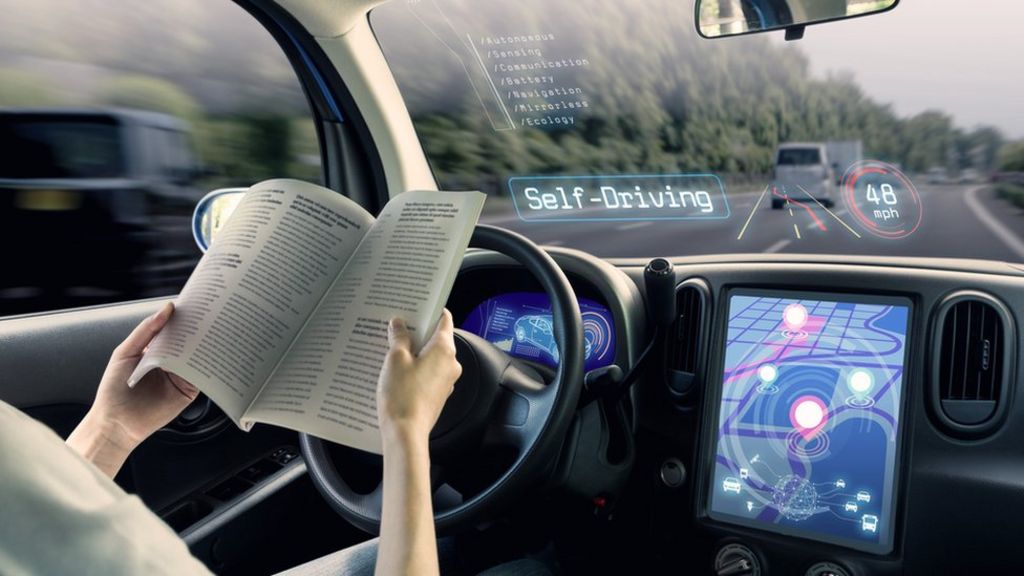 2020 was supposed to be the year that fully functional, self-driving cars would be released onto the road. Many were excited for how the automobile industry would transform, how the economy would flourish with the new and exciting technology, and the options offered by top manufacturers like Tesla, BMW, and Volvo. However, all of this excitement was happening before COVID-19 disrupted life for millions of Americans and left an unpredictable landscape in its wake.
2020 was supposed to be the year that fully functional, self-driving cars would be released onto the road. Many were excited for how the automobile industry would transform, how the economy would flourish with the new and exciting technology, and the options offered by top manufacturers like Tesla, BMW, and Volvo. However, all of this excitement was happening before COVID-19 disrupted life for millions of Americans and left an unpredictable landscape in its wake.
Like many other industries, the sector for autonomous cars has seen vast disruption from the novel coronavirus. Not only has the Coronavirus impacted travel and the enforcement of stay-at-home orders, but the testing for these self-driving cars had to be put on hold to respect new rules on social distancing.
Now, a decade after Google unveiled its autonomous car prototype, the technology many were excited for is still undergoing development. With some companies going out of business or furloughing workers under an extremely volatile economy, some are questioning the future of self-driving cars in the wake of COVID-19.
How Far Along are Self Driving Cars?
This year was revered as being the year for the self-driving car industry to boom. However, that was before the entire globe was upended by a pandemic that halted normal operations.
For the companies that spearheaded this exciting new technology, they were met with a crossroads. Their technology could improve the safety on the roads, not only for those driving but for passengers with a new fear of health safety amid COVID-19. To perfect the technology within autonomous cars, however, it needed to be tested. With stay-at-home orders, regulations against gathering in groups, and simple social-distancing requirements, this testing had to be put off.
“While some testing can be simulated, much of this technology needs real-world scenarios for developers to ensure that the autonomous vehicle will react appropriately,” explains Attorney Christopher Nicolaysen of the Springs Law Group. “Real world tests, while seemingly going well, can still lead to accidents and injuries.”
Limitations on testing, in tandem with economic hardships, has made the push for self-driving vehicles more difficult. Now, the commercial autonomous vehicle market is expected to decline from more than $7 billion in 2019 to a little over $6 billion in 2020, a change that may limit what the industry can do during this fiscal year and into the future. While there is still a demand and interest in this technology, its widespread release and commercial capabilities may be stifled due to the Coronavirus pandemic.
Future for Self Driving Cars
Despite the current hardships on many of these start-ups, there are still autonomous vehicles out on the market that are being utilized during this unprecedented time. In recent months, self-driving cars have been used to deliver groceries, packages, and medicine in states like California and Florida. They have also been utilized internationally for a variety of purposes, like road disinfection in China.
While there are pauses in the technological development for self-driving cars and trucks in the United States at the moment, there is a new opening for this technology on the horizon: mobility with minimal human interaction. In a post COVID-19 world, many are excited for the opportunity to use driverless cars in place of other human-operated transportation.
More relevant than ever before, driverless cars can offer a unique solution to social distancing measures for those who want to take taxis, buses, or other forms of transportation that once relied upon human operation. Not only do autonomous cars offer safety for other drivers on the road through their programming, but there is also the biosafety component for those afraid of close contact with another person for a prolonged journey.
Where Self Driving Cars Stand Now
The path for implementation of autonomous technology is not going to be a straight path forward, especially with the limitations introduced by COVID-19 and the various health protections across the country. However, one thing is for certain: there are expansive opportunities for autonomous technology within the United States.Even though the technology is going to take more time to engineer because of the life altering pandemic, there is still a desire and need for self-driving cars and trucks. As consumer patterns change, whether from an increase in home-delivery or a need for isolated transportation, autonomous technology appears to offer a modern solution that could substantially change how Americans get around.







